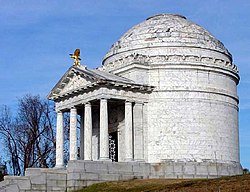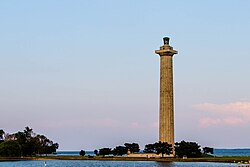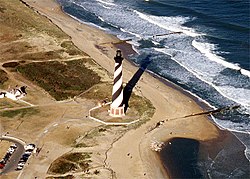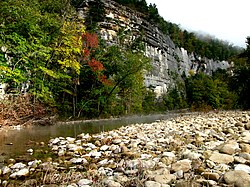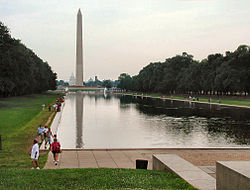| Name | Established | Disbanded | Result |
|---|
| Carlsbad Cave National Monument | October 5, 1923 | May 14, 1930 | Redesignated as Carlsbad Caverns National Park |
| Denali National Monument | December 1, 1978 | December 2, 1980 | Incorporated with Mount McKinley National Park and renamed Denali National Park and Preserve |
| Grand Canyon National Monument | January 11, 1908 | February 26, 1919 | Redesignated as Grand Canyon National Park |
| Grand Canyon National Monument | December 22, 1932 | January 3, 1975 | Abolished; lands transferred with Marble Canyon National Monument into an expansion of Grand Canyon National Park. [6] [7] [8] [9] |
| Marble Canyon National Monument | January 20, 1969 | January 3, 1975 | Abolished; lands transferred with Grand Canyon National Monument into an expansion of Grand Canyon National Park. |
| Kobuk Valley National Monument | December 1, 1978 | December 2, 1980 | Redesignated as Kobuk Valley National Park |
| Papago Saguaro National Monument | January 31, 1914 | April 7, 1930 | Transferred to Arizona; now jointly operated by the cities of Phoenix and Tempe |
| Pullman National Monument | February 19, 2015 | December 29, 2022 | Redesignated as Pullman National Historical Park |
| Lewis and Clark Cavern National Monument | May 11, 1908 | August 24, 1937 | Transferred to Montana; now operated as a state park |
| Kenai Fjords National Monument | December 1, 1978 | December 2, 1980 | Redesignated as Kenai Fjords National Park |
| Channel Islands National Monument | April 26, 1938 | March 5, 1980 | Redesignated as Channel Islands National Park |
| Father Millet Cross National Monument | August 10, 1933 | September 7, 1949 | Transferred to New York upon the closing of the adjacent military base; now operated part of Fort Niagara State Park |
| First State National Monument | March 25, 2013 | December 19, 2014 | Incorporated into First State National Historical Park |
| Lake Clark National Monument | December 1, 1978 | December 2, 1980 | Renamed Lake Clark National Park and Preserve |
| Black Canyon of the Gunnison National Monument | March 2, 1933 | October 21, 1999 | Redesignated as Black Canyon of the Gunnison National Park |
| Harriet Tubman Underground Railroad National Monument | March 25, 2013 | December 19, 2014 | The National Park Service areas of this monument were incorporated into Harriet Tubman Underground Railroad National Historical Park, and the National Park Service no longer recognizes their portions of the national monument as distinct from the national historical park. The remaining portions of Harriet Tubman Underground Railroad National Monument continue to be operated by the U.S. Fish and Wildlife Service. |
Mukuntuweap National Monument
(renamed Zion National Monument in 1918) | July 31, 1909 | November 19, 1919 | Redesignated as Zion National Park |
Zion National Monument
("the Kolob Canyons area") | January 22, 1937 | July 11, 1956 | Incorporated into Zion National Park |
| Capitol Reef National Monument | August 2, 1937 | December 18, 1971 | Redesignated as Capitol Reef National Park |
| Arches National Monument | April 12, 1929 | November 12, 1971 | Redesignated as Arches National Park |
| Bryce Canyon National Monument | June 8, 1923 | February 25, 1928 | Redesignated as Bryce Canyon National Park |
| Wheeler National Monument | December 7, 1908 | August 3, 1950 | Returned to United States Forest Service |
| Holy Cross National Monument | May 11, 1929 | August 3, 1950 | Returned to United States Forest Service |
| White Sands National Monument | January 18, 1933 | December 20, 2019 | Redesignated as White Sands National Park |
| Jackson Hole National Monument | 1943 | September 14, 1950 | Merged into Grand Teton National Park |
| Shoshone Cavern National Monument | September 21, 1909 | May 17, 1954 | Transferred to Cody, Wyoming as a municipal attraction, and later returned to the Bureau of Land Management |
| Old Kasaan National Monument | October 25, 1916 | July 26, 1955 | Transferred to United States Forest Service |
| Castle Pinckney National Monument | August 10, 1933 | March 29, 1956 | Transferred to South Carolina, and later sold to the Sons of Confederate Veterans; site currently inaccessible and unmaintained |
| Saguaro National Monument | March 1, 1933 | October 4, 1994 | Redesignated as Saguaro National Park |
| Verendrye National Monument | June 29, 1917 | July 30, 1956 | Transferred to North Dakota after the construction of the Garrison Dam; site currently flooded by the reservoir Lake Sakakawea |
| Gates of the Arctic National Monument | December 1, 1978 | December 2, 1980 | Renamed Gates of the Arctic National Park and Preserve |
| Fossil Cycad National Monument | October 21, 1922 | August 1, 1956 | Transferred to Bureau of Land Management because of severe vandalism to the site |
| Death Valley National Monument | February 11, 1933 | October 31, 1994 | Redesignated as Death Valley National Park |
| Joshua Tree National Monument | August 10, 1936 | October 31, 1994 | Redesignated as Joshua Tree National Park |
| Ackia Battlefield National Monument | August 27, 1935 | August 10, 1961 | Incorporated into Natchez Trace Parkway |
| Meriwether Lewis National Monument | February 6, 1925 | August 10, 1961 | Incorporated into Natchez Trace Parkway |
| Katmai National Monument | September 24, 1918 | December 2, 1980 | Renamed Katmai National Park and Preserve |
| Mount Olympus National Monument | March 2, 1909 | June 29, 1938 | Redesignated as Olympic National Park |
| Petrified Forest National Monument | December 8, 1906 | December 9, 1962 | Redesignated as Petrified Forest National Park |
| Lehman Caves National Monument | June 10, 1933 | October 27, 1986 | Abolished; incorporated into Great Basin National Park [10] |
| Congaree Swamp National Monument | October 18, 1976 | November 10, 2003 | Redesignated as Congaree National Park |
| Glacier Bay National Monument | February 25, 1925 | December 2, 1980 | Renamed Glacier Bay National Park and Preserve |
| Mound City Group National Monument | January 1, 1918 | January 2, 1992 | Incorporated into Hopewell Culture National Historical Park |
| Minidoka Internment National Monument | January 17, 2001 | May 8, 2008 | Redesignated as Minidoka National Historic Site |
| Pinnacles National Monument | January 16, 1908 | January 10, 2013 | Redesignated as Pinnacles National Park [11] |
| Andrew Johnson National Monument | April 27, 1942 | December 11, 1963 | Redesignated as Andrew Johnson National Historic Site [12] |
| Sieur de Monts National Monument | July 8, 1916 | February 26, 1919 | Redesignated as Lafayette National Park
(renamed Acadia National Park on January 19, 1929) |
| Edison Laboratory National Monument | July 14, 1956 | September 5, 1962 | Combined with Edison Home National Historic Site into Edison National Historic Site, later redesignated Thomas Edison National Historical Park |
| Wrangell–St. Elias National Monument | December 1, 1978 | December 2, 1980 | Renamed Wrangell–St. Elias National Park and Preserve |
| Badlands National Monument | January 29, 1939 | November 10, 1978 | Redesignated as Badlands National Park |
| Great Sand Dunes National Monument | March 17, 1932 | September 14, 2004 | Renamed Great Sand Dunes National Park and Preserve |
| Biscayne National Monument | October 18, 1968 | June 28, 1980 | Redesignated as Biscayne National Park |
| Fort Jefferson National Monument | January 4, 1935 | October 26, 1992 | Redesignated as Dry Tortugas National Park |
| Cinder Cone National Monument | May 6, 1907 | August 9, 1916 | Merged with Lassen Peak National Monument and redesignated as Lassen Volcanic National Park |
| Lassen Peak National Monument | May 6, 1907 | August 9, 1916 | Merged with Cinder Cone National Monument and redesignated as Lassen Volcanic National Park |
| Homestead National Monument of America | March 19, 1936 | January 13, 2021 | Redesignated as Homestead National Historical Park |






























